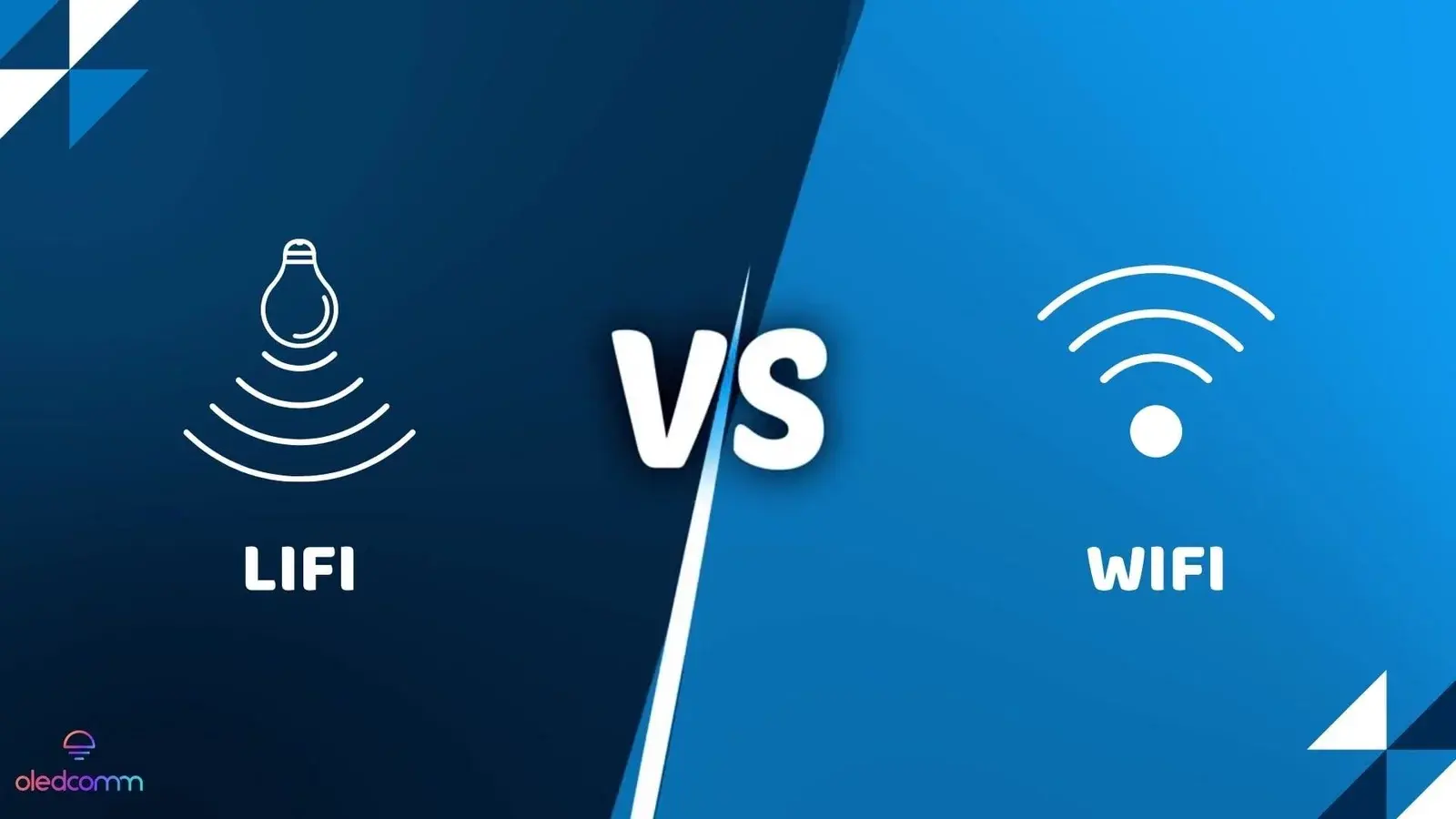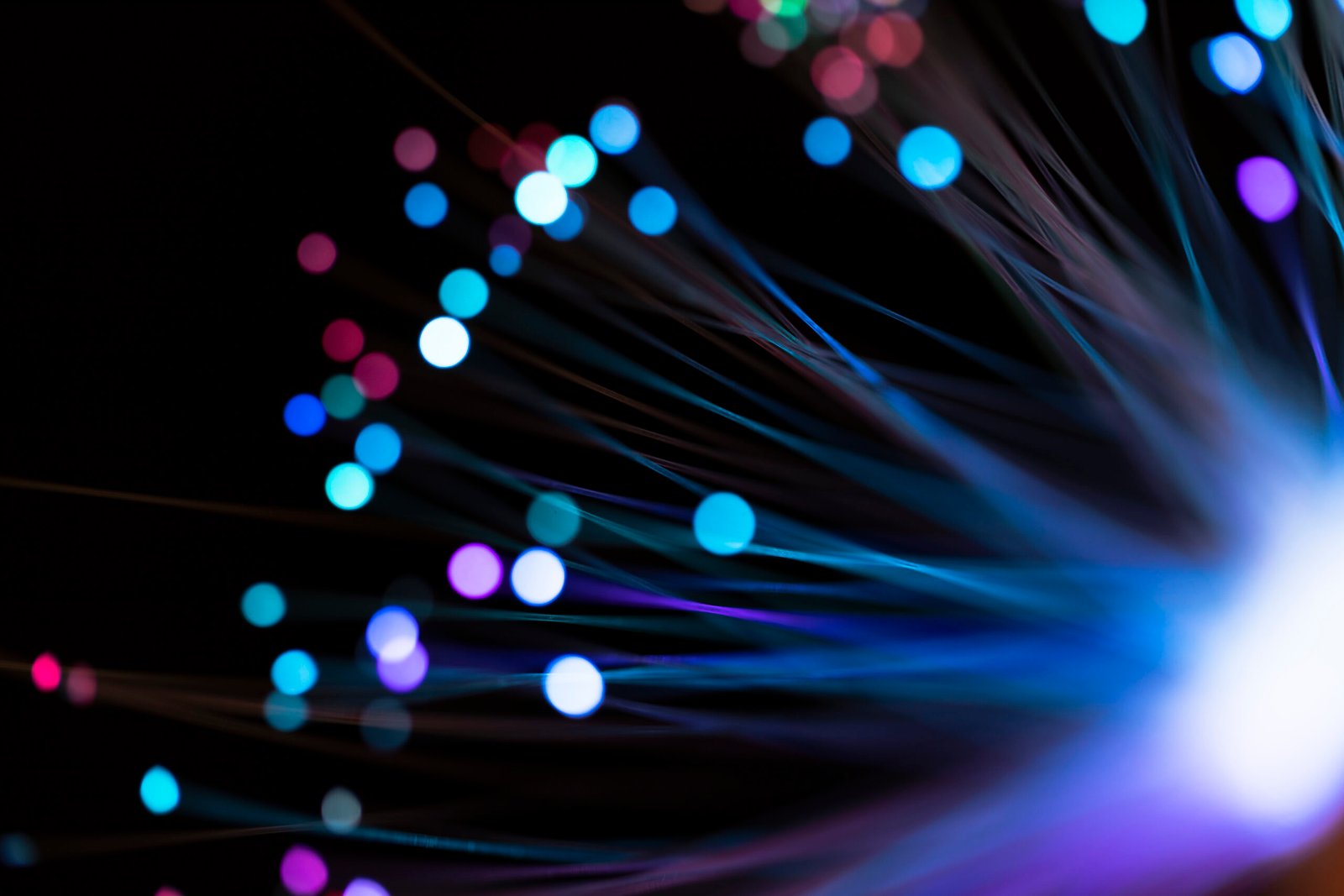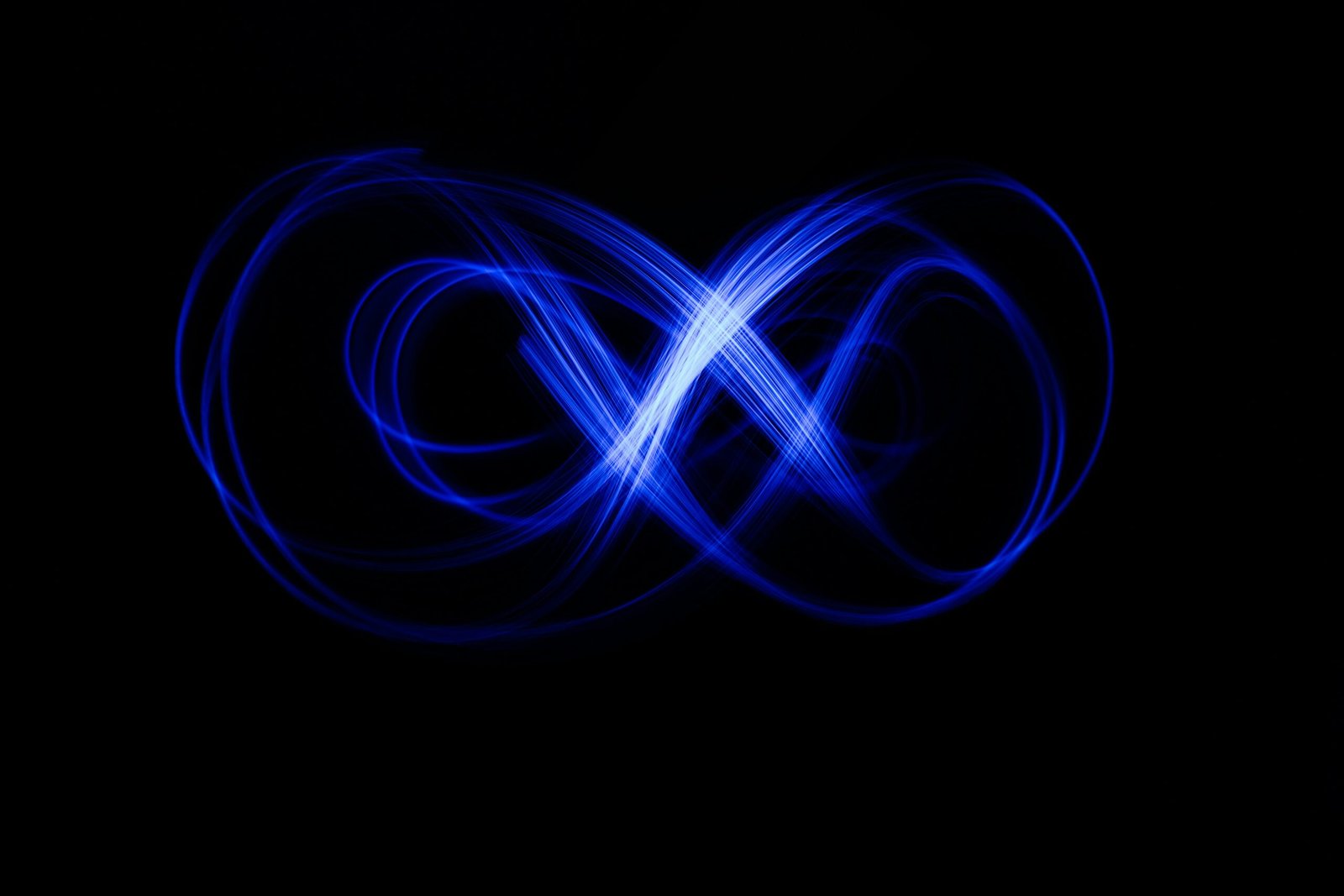
Difference Between LiFi and WiFi: Understanding Their Advantages and Limitations

While LiFi and WiFi may sound similar, they are distinct wireless communication technologies with significant differences upon closer examination.
One uses light, and the other radio frequency waves. One is at the dawn of its expansion, the other is anchored in our daily life. As we draw a much-needed comparison between WiFi vs LiFi, we will try to understand how their functional differences can affect the trajectory of the organizations that employ them.
In an ultra-connected society where access to the Internet becomes more important than ever, which technology stands out as the winner? That is the question we will try to answer in this article.
What is WiFi?
WiFi or Wireless Fidelity is a set of wireless networking protocols that are used for providing local area networking and internet access services to devices. The WiFi technology relies on radio frequency signals to transmit data across a network. Presently, radio frequency waves are the most commonly used communication spectrum for computers, mobile devices, and other equipment to interface with the Internet. WiFi Internet is used widely in homes, offices, industrial settings, and public institutions to link devices and provide internet connectivity with the help of wireless routers and access points.
Advantages of WiFi
Here are some key benefits of using WiFi technology:
- Improved Speed
The latest version of WiFi technology, i.e. WiFi-5 has significantly higher data transfer rates when compared to WiFi-4. Present-day WiFi connections can achieve speeds up to 3.5 Gbps, making them compatible for activities that require high volumes of data transmission, such as online gaming, streaming videos, online conferences, and large file transfers.
- Better Security
WiFi can offer improved privacy to users with the help of a combination of network security measures. Advanced encryption and authentication processes, along with WPA3 access norms can help in safeguarding the connection privacy. The integrity of WiFi networks can also be enhanced by using password-based protection, VPN support, and network segmentation procedures.
- Improved Mobility
WiFi networks are known for providing the widest range of internet coverage among all communication technologies. The range of an average WiFi connection extends up to 30 meters, allowing all devices within this radius to enjoy internet access through a single network. As a result, WiFi can be used to provide continual connectivity for mobile devices as long as they stay within the range of a particular network.
- Supports Multiple Users
WiFi technology of today can support MU-MIMO or multi-user multiple input-multiple output. This allows a number of devices within a network range to access the internet. This feature allows for improved network efficiency, reduced power consumption, and enhanced user experience in densely populated environments.
Limitations of WiFi
Here are a few disadvantages of relying on WiFi technology:
-
WiFi networks are only effective within a limited range of 25-30 meters. This restricts the mobility of connected devices as they can only enjoy internet access if they stay within a predetermined coverage zone.
-
WiFi signals can lose strength with distance. As a device moves farther from the network antenna, its connection becomes weak.
-
Most WiFi networks are vulnerable to cyber-attacks as they are not protected by firewalls. Also, the radio spectrum is easy to intercept, making data transmitted through WiFi vulnerable to cyber-attacks.
-
The radio frequency spectrum is congested and overburdened in most urban areas. Due to this, WiFi connections can face complications such as reduced stability, and higher latency or lags in transmission.
-
WiFi offers slower data transmission rates when compared to direct cabled connections and optical networks.
What is LiFi?
LiFi or Light Fidelity is a wireless communication technology that uses light frequency signals to transmit data. Unlike traditional connections, LiFi uses optical signals in the visible, infrared, or invisible spectrum to carry information in a network. The term LiFi was coined by Harald Haas in 2011 when he used it to describe his work on VLC-based data transmission in a TedTalk. Currently, most LiFi connections depend on light emitted from LED bulbs to transfer data across a network.
Advantages of LiFi
Here are some main advantages of using LiFi technology:
- Higher bandwidth
LiFi technology depends on light waves that offer higher bandwidth and lower latency in data transmission. This results in a high-speed connection that can transfer large volumes of data in an instant. LiFi making it superbly effective for providing real-time navigation, streaming, and gaming services.
- Enhanced Security
The network privacy provided by LiFi is far more advanced than that of conventional communication networks. LiFi relies on the inherent physical characteristics of light waves to confine data transmission into a predetermined coverage zone. As a result, no devices outside this area can gain access to a LiFi network. This feature, combined with measures such as password-protected network access and log management software gives LiFi networks a double layer of privacy.
- No Interference
The use of light-frequency signals makes LiFi technology immune to interference from most other electromagnetic radiations in their environment. Since most devices and machines still rely on radio waves to establish communication, LiFi networks remain undisturbed by their operations. This makes LiFi networks extremely stable and effective in densely connected spaces such as hospitals, factories, and airplanes.
- Environment Friendly
LiFi technology relies on minimal connectivity equipment to establish a well-functioning connection. Unlike traditional wired networks, LiFi-based systems do not need heavy cable installations as they rely on free space as their medium of data transmission. Moreover, LiFi networks are also power-saving, leading to reduced energy usage in the long run.
Limitations of WiFi
Here are some limitations of using LiFi technology:
- High Cost of Installation
Since LiFi technology is still new and evolving, organizations might need to spend extra resources on its adoption. Buying LiFi-enabled equipment, altering pre-existing infrastructure, and managing proper network deployment requires initial investments. However, the long-term cost-saving effects can more than compensate for the money spent on installation.
- Limited Range
LiFi networks can only be effective within a pre-determined coverage zone. As light signals cannot pass through opaque objects, LiFi access points must be placed strategically in order to support device connectivity. Moreover, present-day LiFi networks can only support a limited number of devices because of their range limitations.
- Line-of-sight Requirements
Light technology is most efficient in establishing point-to-point communication, leading to enhanced precision in data transmission. LiFi signals cannot pass through walls or furniture as they require direct line-of-sight connectivity with the receiving device. This feature results in reduced mobility for LiFi users as they must always maintain direct connectivity with the transmitted light signals.
- Limited Market Popularity
On account of being a relatively new technology, LiFi is not so well-known among tech enthusiasts in the electronic market. This hinders its widespread adoption since most consumers have yet to learn about the benefits of LiFi-based networks. Companies such as Oledcomm are actively engaged in manufacturing standardized products to accelerate the development of a trustable LiFi ecosystem for the masses.
WiFi and its Core Features
In simple terms, WiFi is a communication technology for transmitting data via radio waves.
WiFi is a wireless technology that uses radio frequency waves to transmit data across devices. It is based on a group of wireless network protocols derived from the IEEE 802.11 family of standards that are used for local area networking of devices and internet connections. Presently, Wifi is the most widely used technology for providing internet access across the globe. It depends on carrying signals through wireless routers to wireless access points on devices that receive this data carried on radio waves.
It goes without saying that WiFi has radically changed the concept of Internet connection by allowing its users to free themselves from the constraints of a wired connection. However, it has some major drawbacks inherent to its operation. First of all, WiFi, because of its large range, is a very vulnerable solution to hacking. Indeed, anyone located within the radius of the radio waves emitted by a WiFi device can undertake to hack the data circulating on it. Although there are passwords and other more or less sophisticated means of protection, the damage caused by cybercrime throughout history has proven to be far more insidious.
Secondly, the use of radio waves regularly leads to interference that results in signal drops or losses, a phenomenon that tends to increase with the constant increase in the number of connected objects. The interference caused by radio waves also makes WiFi unsuitable for certain sectors, such as aeronautics. Moreover, the impact of such exposure to radio waves on health raises questions and concerns, without any conclusive answer.
LiFi Technology and its Core Features
LiFi or light fidelity is a bi-directional system of wireless communication that transmits data as optical signals. This means that information carried by LiFi technology uses the invisible spectrum of electromagnetic waves to travel from source to receptor devices. LiFi connections use LED lights to provide internet connectivity through free space optics. The communication and connectivity achieved by LiFi are much superior in speed, stability, and security when compared with traditional internet technologies.
LiFi or Light WiFi operates on visible light, the optical part of the electromagnetic spectrum. The result of years of extensive research, LiFi can now generate a high-speed internet connection of up to 3 Gb/s, equivalent to the fastest fiber optic offerings. LiFi speed and connectivity are made possible by the imperceptible pulsation of a beam of light emitted by an LED bulb located in the transmitting device (Access Point), captured by a receiving device plugged into the connected device (Dongle).
Unlike WiFi, LiFi offers absolute security of the transmitted data, because their circulation is limited exclusively to the coverage area of the light beam(s), and the information can therefore never cross walls. Beyond the cybersecurity issues, LiFi allows for uniform Internet coverage in its broadcast room. In practice, in a 32-student classroom with only two access points, each student can enjoy a super-fast, latency-free connection, even if they are surfing at the same time as everyone else.
In addition, LiFi technology works entirely without radio waves. It does not interfere with WiFi, 4G or 5G, or even with the equipment on board the aircraft. This is how Oledcomm was able to equip an Air France plane with high-speed internet in 2019 thanks to LiFi. The absence of radio frequency waves also means that LiFi is not harmful to health. Its application in schools, day-care centers, and hospitals will therefore make it possible to offer young people in development and fragile people an optimal Internet connection without danger to their health.
LiFi vs WiFi: Fundamental Differences
Today, WiFi is omnipresent in our society. In homes, in companies, institutions, and communities: humans have built a mentally inseparable relationship with the internet powered by WiFi. But now there is another technology on the way to revolutionizing wireless communication. This is LiFi, for Light Fidelity, a system of data transmission by light that is similar to WiFi (almost) only in the sound of its name. In fact, although these two technologies are wireless data transmission methods, they differ in fundamental ways. As the ambitious expansion of connectivity through light becomes a reality, it's worth asking: What are the characteristic differences between LiFi and WiFi? Here is a list!
| Characteristic | LiFi | WiFi |
|---|---|---|
| Full Form | Light Fidelity | Wireless Fidelity |
| Invented | 2011 | 1997 |
| Data Transfer Speed | Up to 3 Gbps | Up to 3.5 Gbps |
| Standard | IEEE 802.11bb | IEEE 802.11ax |
| Frequency of operation | Approx. 200,000 GHz | 2.4 GHz - 6 GHz |
| Coverage Distance | Around 10-20 meters | Approx. 30 meters |
| Bandwidth | Unlimited | Limited |
| Bare Minimum Components Used | LED bulb, LED driver, Photodetector | Router, modem, access points |
| Operation | Transmits data using LED light bulbs | Transmits data using radio waves through a router |
| Privacy | More secure data transmission as light signals cannot cross concrete walls | Walls do not block radio waves, so security can be compromised |
| Power consumption | Low | High |
| Interference | No interference even in high-density environments | Can face interference issues in a dense environment |
| Security | Non-hackable and non-jammable from outside | Hackable, jammable, and detectable |
| ATEX Zones | Zero radio frequency signature | Prohibited in ATEX zones due to radio frequency waves |
Future of LiFi: How Li-Fi Supports the Connectivity Goals of Tomorrow?
If LiFi and WiFi both have similar qualities and purposes, their differences should make us wonder about the future of the Internet connection. But this is not a David and Goliath confrontation.
LiFi vs WiFi: Can WiFi be completely replaced by LiFi?
The real challenge of the emergence of LiFi is not to replace one technology with another. It is above all about extending the field of possibilities in the field of telecommunications, about redesigning tomorrow's Internet connection by pushing back the limits of current technologies without giving up their advantages.
As we understand more about light communication and how LiFi works, we can customize this technology to create better solutions for the future. What's exciting is that we have made a promising start, with a strong backing of R&D to support further growth. For now, we can conclude that a healthier, safer, more economical, and more ecological future is all a certainty as LiFi takes over the tech world.
To understand more about how a LiFi system could help your business grow, contact us!
WiFi or Wireless Fidelity is a set of wireless networking protocols that are used for providing local area networking and internet access services to devices. The WiFi technology relies on radio frequency signals to transmit data across a network. Presently, radio frequency waves are the most commonly used communication spectrum for computers, mobile devices, and other equipment to interface with the Internet.
WiFi networks are known for providing the widest range of internet coverage among all communication technologies. The range of an average WiFi connection extends up to 30 meters, allowing all devices within this radius to enjoy internet access through a single network.
The real challenge of the emergence of LiFi is not to replace one technology with another. It is above all about extending the field of possibilities in the field of telecommunications, about redesigning tomorrow’s Internet connection by pushing back the limits of current technologies without giving up their advantages.
Recent articles

Categories
See some more...




